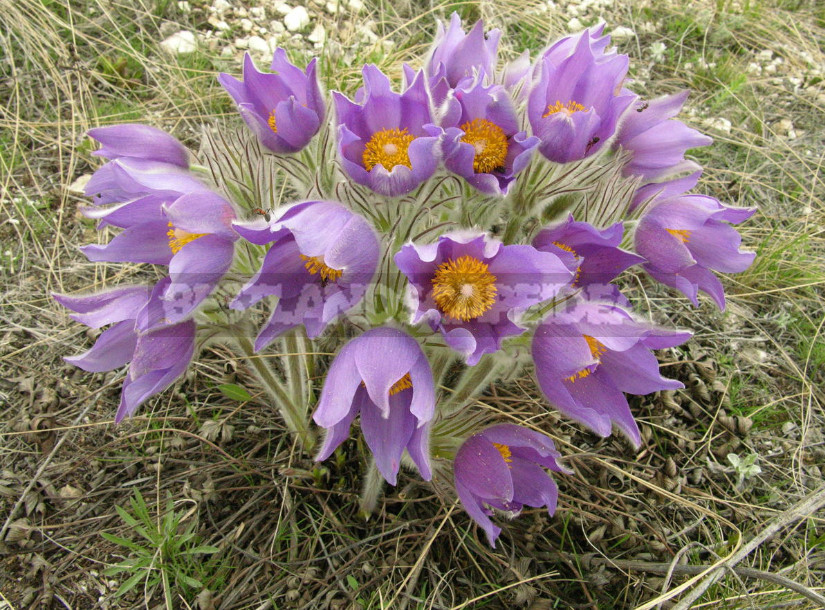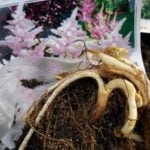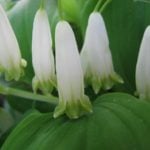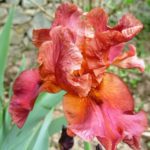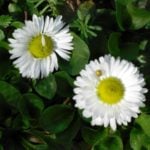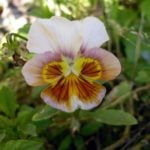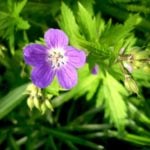Typical Pulsatilla patents grows in meadow steppes, pine forests, on dry slopes in the countries of Central and Northern Europe.
It has finger dissected leaves and flowers in purple tones and a fairly wide share sheet. But on the limits of the range, and there are all sorts of anomalies, which often receive the status of the species and their own names.
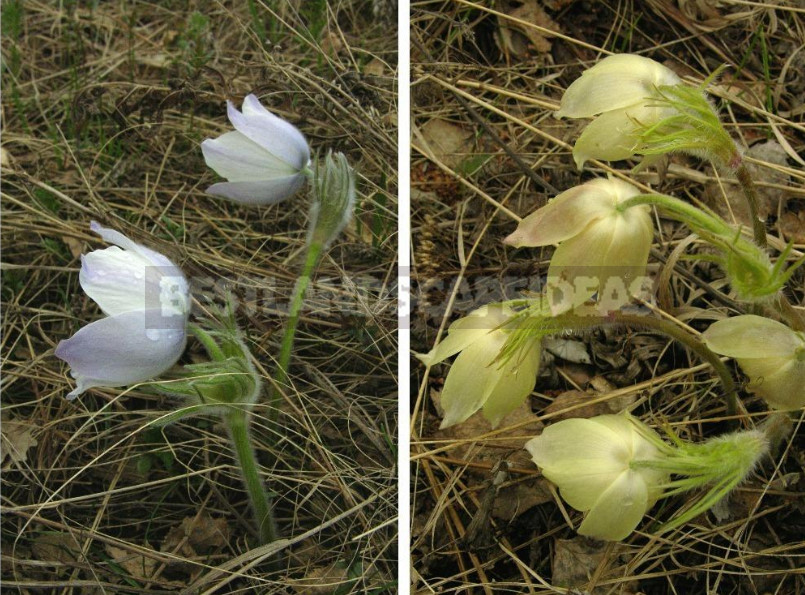
Especially interesting and large-scale transformations occur with this Pulsatilla in the Eastern part of its range. In its populations are increasingly beginning to meet instances with finely dissected leaves and yellowish flowers.

There is already fireworks of various colors: white, yellowish, pink, blue, and all this can be seen in one clearing. In populations there are only finely dissected leaves, which allowed to distinguish such species as P. multifida, if the flowers are lilac, and P. flavescens = P. angustifolia with yellowish flowers.
In different areas dominated by one or the other color. Confusion is considered the result of a meeting of European Pulsatilla and gave it a specific name-P. uralensis.
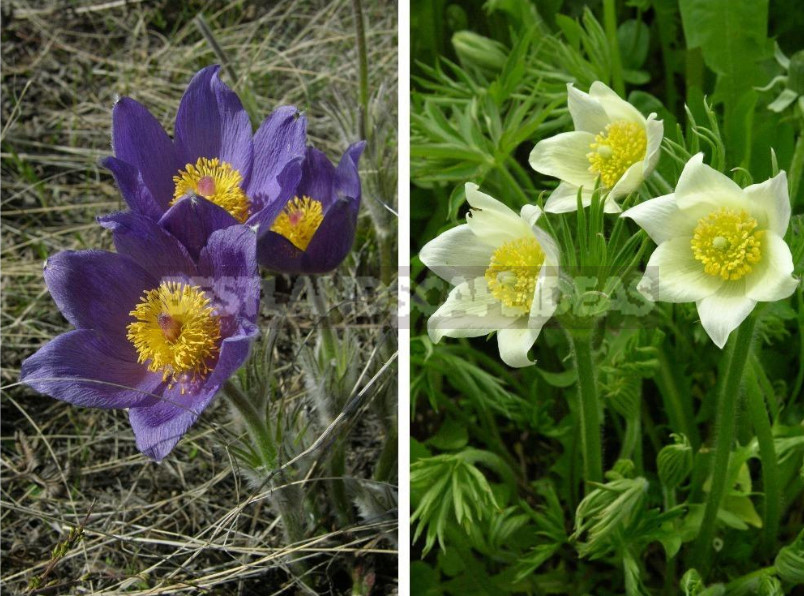
But if you look at the case informally, we can consider them geographical races, which were isolated when moving it to the East. That is, there was approbation of different options at a meeting with new conditions and selection of the most suitable. By the way, it is believed that the lilac placers that adorn the spring dry prairies of their continent from Mexico to Alaska, it creates Pulsatilla patents, although their plants have finely dissected leaves.
A large selection of flowers offers P. vulgaris, at least, so say gardeners. Typical specimens are found in Central and Northern Europe. This is quite a powerful plant with purple flowers sticking out and repeatedly dissected feathery leaves.
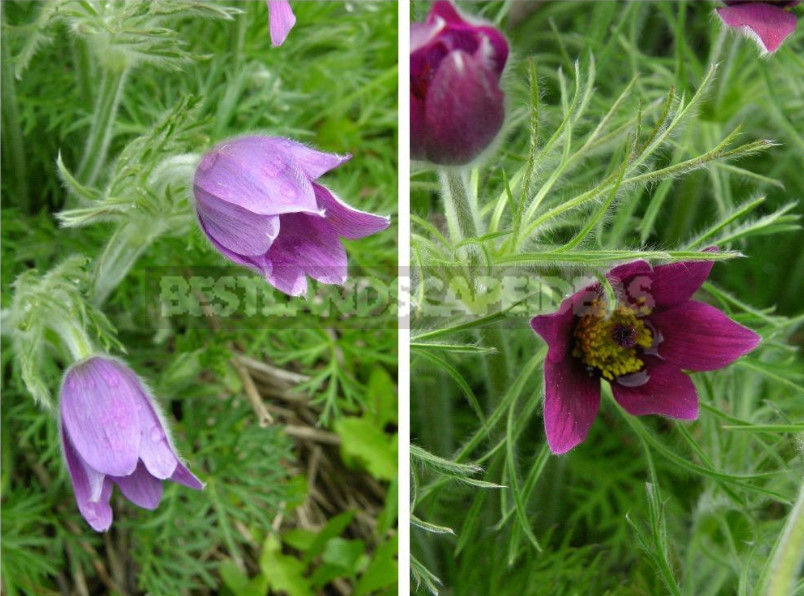
For P. vulgaris listed almost all common varieties of Pulsatilla. Most likely, this is a Convention, and in fact they are derivatives of several European species, which differ in small details and variously shuffled by taxonomists. When isolated populations find themselves in different countries, each of them, justified or not, wants to have its own “dream.”
Common for these plants is relatively large in facing Zenit strongly dissected flowers and leaves. These are P. grandis, P. halleri, P. taurica, P. polonica and others.
Usually varieties differ in color, which varies from white to dark red. Here are some of them:
- ‘Rote Glocke’ – (‘Rode Klokke’) – wine red;
- ‘Rubra’ – purple-purple;
- ‘Barton’s Pink’ – pink;
- ‘Alba’ – of course, white;
- Heiler Hybrids-a set of different shades.
There is an interesting group with dissected, fringed tepals: Fringed Hybrids. They can be offered as a mixture of colors ‘Papageno‘ or disassembled by color, for example,’Fimbriated Reds’. Known Terry form ‘Flore Pleno’. For some reason, especially appreciated the “dreams” of the Hungarian plant, which are offered as Budapest Seedling or Grandis Budapest Type.

Less common in the culture, although not difficult to grow other plain and low-mountain “dreams” with mournfully drooping small flowers. Their poor appearance and often gloomy coloring can attract only collectors. They are named:
- P. pratensis,
- P. ucrainica,
- P. ambigua,
- P. montana,
- P. dacica,
- P. rubra,
- P. nigricans.
They prefer sandy soils (sometimes just dunes and river sediments) or limestone outcrops within Europe).
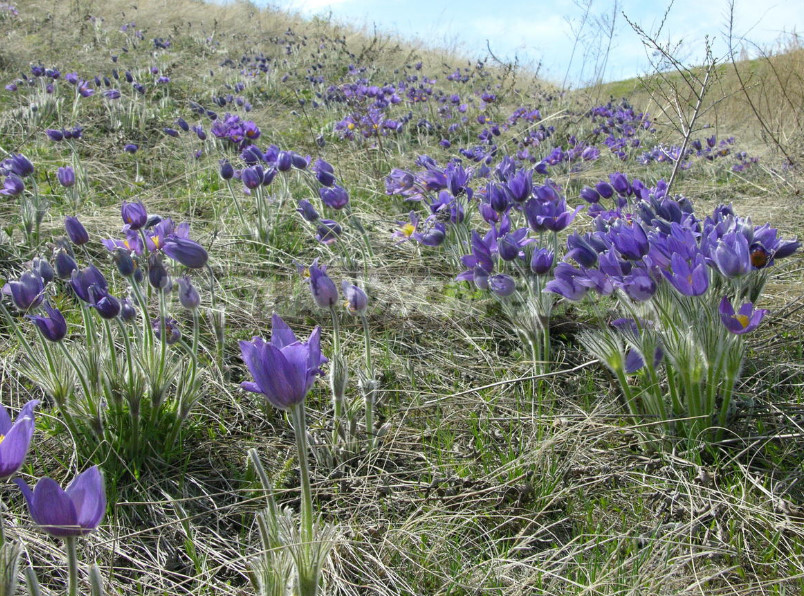
But many types of Alpine “dreams” – not for novice gardeners. These inhabitants of the tundra, Alpine meadows and rocks sometimes come down to us with “plant hunters”, but in the gardens do not sit long. This can be confirmed by many who tried to get P. alpina or little white P. alba. They are well different from other “dreams” that stem leaves, forming a “collar” under the protruding flower, feathery and similar to the basal. P. alpina has color forms: white and yellow, which is described as a separate species – P. aurea.
Data on the cultivation of Alpine Pulsatilla quite vague. The soil for cultivation should contain lime. Seeds germinate better after stratification, and they are photosensitive, i.e. they are not heavily sprinkled.
P. albana with large and dissected leaves and a small drooping yellow bell. Its color forms, which may have the status of a species, are reddening after flowering, purple, lilac–pink and whitish (P. andina, P. violacea, P. Armenia, P. georgica). In any case, some of them are simple in culture.
As for the most interesting “dreams” that you can wish, it is, above all, P. kostyczewii. In addition, the plant is – endemic rarity, which can not get, it is very beautiful: with large (up to 6 cm in diameter) wide open bright pink flowers with purple stamens. Tepals persist for a long time, accompanying the fluffy bunches of fruit.
Another rare endem, the area of which is limited to the Western States of the United States from California to Montana – is P. occidentalis, a powerful plant up to 50 cm tall, with small white flowers and large double pinnate leaves. Leaves “collar” the same shape as the basal. It is never offered for sale, although it would be very promising.
